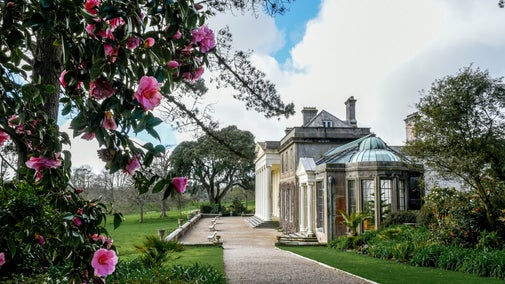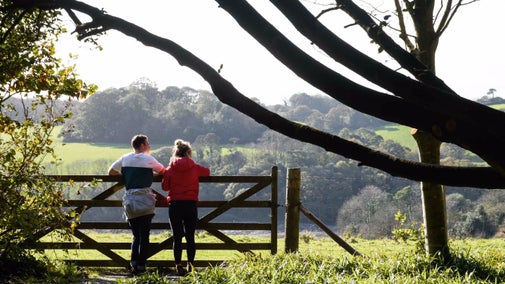
Trelissick's collections
Explore the objects and works of art we care for at Trelissick on the National Trust Collections website.

Discover the history of Trelissick house and estate, what makes it special and the people who lived here.
Overlooking sweeping countryside, Trelissick House is a striking sight with its neoclassical columns. Erected by Thomas Daniell in 1824, this facade represented wealth and status.
With a more reserved interior, its true character as a relaxed space to enjoy the spectacular maritime views becomes apparent.
The house as it stands today was originally built in 1755 and each family that has occupied it has lent their vision to its appearance and scale. With each successive owner adding floors and facades, the different layers of the house become an allegory for its patchwork history.

Ida Copeland gave the house along with the entire Trelissick estate to the National Trust in 1955 with the family retaining the house as their home.
When the family chose to leave the main part of the house in 2012 they held a country house auction to sell the collections within the house, including the important family collection of Spode Copeland China.
The National Trust purchased some important lots at auction. This combined with items purchased from family members adds to the contents in the house. Trelissick House was first opened in December 2013 for a Christmas event and trial opening now continues.
As a charity we will always care for Trelissick House and are in the process of deciding how to use and present the house in the future. The aim is to help tell the stories of Trelissick, provide a sustainable business model whilst ensuring everyone who visits has a very enjoyable time.

Trelissick commands an imposing view across the Fal estuary. On seeing the site John Lawrence decided to build a villa and develop a garden here in the 1750s.
With views to Falmouth and out to sea, the vista is ever changing with the natural rhythms of climate and tide.
The Daniell family, well known as miners, bought Trelissick in the 1800s and developed the house with the London architect PF Robinson.
They added on impressive porticos and further developed the estate. It was once said that Thomas Daniell could ride to Truro without leaving his own land. With Thomas Daniell becoming bankrupt through gambling, the house was later sold to help pay off his debts.
Trelissick passed through the hands of the Boscowen family at Tregothnan and onto the Davies-Gibert family. It was Carew Davies Gilbert, wealthy through inheritance at a young age who built the second floor onto Trelissick house.
He also built many of the farm buildings that are now home to the Crofters Café and bookshop. Carew was also a major Victorian plant collector and contributed hugely to the development of the garden at Trelissick.
In the 1900s a wealthy banker and director of Harrods, Leonard Daneham Cunliffe, brother of Lord Cunliffe (deputy governor of the bank of England) was sailing in his yacht. Daneham spotted Trelissick House on the headland whilst out at sea.
The sight made such an impression on him that he made enquiries to live in the house. He started by renting Trelissick and eventually purchased the estate in 1918.
He lived at Trelissick with his staff until he died in 1937, passing Trelissick to his step-daughter, Ida Copeland.
Ida was from a family of Italian bankers, a second cousin of Florence Nightingale and was married to Ronald Copeland, chairman of the Spode Copeland china works.
They used Trelissick house as a summer home, eventually giving Trelissick estate to the National Trust, with the house and walled garden being retained as a family home. Their son, Spencer, and in turn grandson William lived in the house until William, his wife Jennifer and their children decided to move to their main home in 2012.

Explore the objects and works of art we care for at Trelissick on the National Trust Collections website.
Discover peaceful lawns and tranquil orchard spaces in the garden. Stop for far-reaching maritime views at this green lookout point high above the River Fal estuary.

Visit the estate for walks with far reaching views. An abundance of wildlife fills the air with sounds at this green haven in Cornwall.

Find out where to buy food and drink, and browse for gifts and souvenirs, during your visit to Trelissick.

Learn about people from the past, discover remarkable works of art and brush up on your knowledge of architecture and gardens.

Explore the objects and works of art we care for at Trelissick on the National Trust Collections website.
